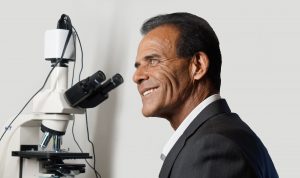How to Prevent Concussion-Induced Brain Damage in Athletes
A concussion is caused when the brain experiences trauma from an impact or a sudden, forceful movement, resulting in neurological symptoms. Between 1.6 and 3.8 million sports and recreation related concussions occur each and every year in America – the majority of which happen to males under the age of 19. This is scary because concussions can damage the brain and have serious short and long-term consequences, especially if they remain undiagnosed and the athlete returns to the game too soon.
Concussion Symptoms and Consequences
 The trauma to the brain caused by a concussion causes electrical and metabolic changes. The two most common immediate symptoms are confusion and amnesia (memory loss about either the event itself or a time period before the event). Other possible symptoms may include: dizziness, headaches, nausea, sleep and memory problems, trouble concentrating, fogginess and irritability. Medical experts used to believe that a concussion only occurred when there was a loss of consciousness, but we now know this to be untrue. In fact, a loss of consciousness only occurs in about 10 of concussions — in the most severe cases. Up until recently, when an athlete got knocked down, the doctor would use a simple finger test (follow my finger to the left and to the right etc.), followed by questions such as “What did you do yesterday?” and “What is your name?”. If the athlete passed these rudimentary tests they were assumed to be fine, and oftentimes, sent right back into the game. This method of diagnosis resulted in many concussions being missed; as mild injury and inflammation to the brain does not necessarily cause any symptoms.
The trauma to the brain caused by a concussion causes electrical and metabolic changes. The two most common immediate symptoms are confusion and amnesia (memory loss about either the event itself or a time period before the event). Other possible symptoms may include: dizziness, headaches, nausea, sleep and memory problems, trouble concentrating, fogginess and irritability. Medical experts used to believe that a concussion only occurred when there was a loss of consciousness, but we now know this to be untrue. In fact, a loss of consciousness only occurs in about 10 of concussions — in the most severe cases. Up until recently, when an athlete got knocked down, the doctor would use a simple finger test (follow my finger to the left and to the right etc.), followed by questions such as “What did you do yesterday?” and “What is your name?”. If the athlete passed these rudimentary tests they were assumed to be fine, and oftentimes, sent right back into the game. This method of diagnosis resulted in many concussions being missed; as mild injury and inflammation to the brain does not necessarily cause any symptoms.
While the majority of mild brain injuries will fully heal on their own if given time, playing before complete healing has occurred is extremely dangerous. Healing can take days, weeks or even months, and during that time, the cells in the brain are red, hot, swollen and extremely vulnerable to catastrophic damage. Even the slightest impact or trauma to the brain during the healing time, can cause recurrent and cumulative damage – a condition known as “Second Impact Syndrome.” Playing before fully recovered can cause an accumulation of slight damage from low-intensity impact to the head, to result in severe brain trauma. It also vastly increases the risk for long term damage and conditions such as TBI and CTE.
What You Need to Know About TBI and CTE
 More severe concussions and blows to the head can cause Traumatic Brain Injury (TBI) – which is the term used to describe damage to the brain caused by an abrupt jolt that forces the brain to bang against the bony ridge that shelves it. TBI causes damage to the fine blood vessels and the vessels leak and cause inflammation, initiating a process that can lead to chronic brain damage. Although a TBI can cause immediate symptoms, memory and mood disorders, and behavioral and personality changes often don’t manifest until years later, making it hard to link the changes to the TBI that occurred. In fact, between 85 and 95 of people who suffer from a mild TBI don’t experience any immediate symptoms, which is why many professional athletes find themselves suffering the consequences of TBIs years, or even decades after they retire.
More severe concussions and blows to the head can cause Traumatic Brain Injury (TBI) – which is the term used to describe damage to the brain caused by an abrupt jolt that forces the brain to bang against the bony ridge that shelves it. TBI causes damage to the fine blood vessels and the vessels leak and cause inflammation, initiating a process that can lead to chronic brain damage. Although a TBI can cause immediate symptoms, memory and mood disorders, and behavioral and personality changes often don’t manifest until years later, making it hard to link the changes to the TBI that occurred. In fact, between 85 and 95 of people who suffer from a mild TBI don’t experience any immediate symptoms, which is why many professional athletes find themselves suffering the consequences of TBIs years, or even decades after they retire.
Recently, researchers have discovered that concussions and Traumatic Brain Injuries can also cause Chronic Traumatic Encephalopathy (CTE), which is a progressive degenerative disease of the brain that causes similar neurodegenerative brain cell changes as Alzheimer’s Disease. It is caused by repetitive brain trauma, including hits to the head that did not result in any concussion or TBI symptoms. The symptoms of CTE are similar to those of dementia and may include: confusion, speech, writing and decision making difficulties; personality changes, social withdrawal, delusions, paranoia, loss of inhibitions, memory loss, irritability, aggression, depression and suicidal thoughts – most of which occur cyears after the injury occurred.
Practicing Sports Safely
 Fortunately, concussions have become a hot topic in the past few years, prompting increased research on how to prevent, diagnose and treat them; as well as increased awareness and safety practices. This is great news because the vast majority of damage caused by concussions can be prevented by simply allowing the brain adequate time to heal before returning to the sport. Furthermore, a proper diagnosis, allows for the timely utilization of certain treatments (rehab, active physical therapies, avoidance of strict rest etc.), in order to optimize brain healing.
Fortunately, concussions have become a hot topic in the past few years, prompting increased research on how to prevent, diagnose and treat them; as well as increased awareness and safety practices. This is great news because the vast majority of damage caused by concussions can be prevented by simply allowing the brain adequate time to heal before returning to the sport. Furthermore, a proper diagnosis, allows for the timely utilization of certain treatments (rehab, active physical therapies, avoidance of strict rest etc.), in order to optimize brain healing.
Perhaps one of the biggest advances in sport safety technology ever, is the computer based testing program — ImPACT™. It is a user-friendly program that athletes take prior to participating in contact sports in order to create a neurocognitive baseline. It objectively assesses brain functions that are typically affected if someone experiences a concussion. If the athlete does get hit in the head or has a concussion, they are then retested against their personal baseline. It takes the guesswork out of diagnoses, so it’s no longer a question of “how many fingers do you see” and “look to the right and to the left.” It provides an immediate and conclusive analysis of brain impact; helping to both diagnose concussion severity and to determine when it’s safe for an athlete to return to contact sports. Although it’s currently the world’s leading computer software system for evaluating brain function and concussions in professional athletes; it is rarely used in youth athletics. Parents need to be made aware of this technology, because it is the youth that are most often effected by concussions.
Please help us to educate the public on concussion safety practices by sharing this article with any parents who have a child that plays contact sports, or anyone you know who participates in contact sports themselves.
References:
http://www.josephmaroon.com/concussions/



